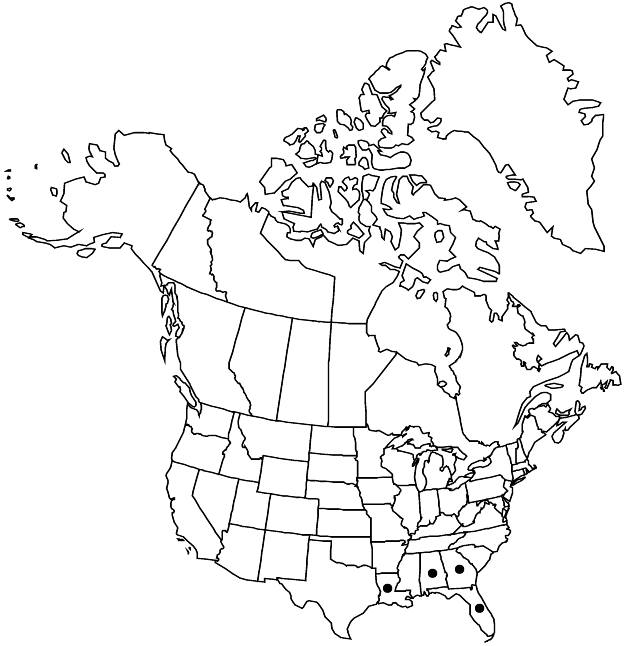Paronychia patula
Sida 1: 102. 1962.
Plants annual or rarely short-lived perennial; taproot filiform to slender. Stems prostrate to erect, much-branched, 5–50 cm, retrorsely pubescent throughout. Leaves: stipules lanceolate, 1.5–7 mm, apex acuminate, entire; blade linear-oblong to oblanceolate, 3–20 × 0.5–3 mm, herbaceous, apex obtuse to subacute, sparsely antrorsely pubescent. Cymes terminal and lateral, 15–50+-flowered, densely congested, ± spheroid clusters 3–5 mm wide. Flowers 5-merous, cylindric, with enlarged hypanthium and calyx constricted then widening distally, 1.2–2.2 mm, pubescent, sometimes only slightly so, mostly proximally with straight or usually hooked hairs; sepals redbrown, white distally, midrib and lateral pair of veins becoming prominent, linear to oblong, 0.6–1.2 mm, papery, margins white, 0.03–0.1 mm wide, papery, apex terminated by mucro, hood obscure, narrowly rounded, mucro short-conic, 0.05–0.1 mm, glabrous; staminodes triangular, 0.2–0.4 mm; style 1, cleft (2-lobed or 3-lobed) in distal 1/5, 0.5–1.3 mm. Utricles ovoid to subglobose, 0.4–0.6 mm, ± smooth, glabrous.
Phenology: Flowering spring–fall.
Habitat: Sandhills, woodlands, fields, clearings, roadsides
Elevation: 0-100 m
Distribution

Ala., Fla., Ga., La.
Discussion
The Louisiana record of Paronychia patula, based on a specimen at NY, is questionable.
Selected References
None.
Lower Taxa
"widening" is not a number."/10" is not declared as a valid unit of measurement for this property. "/10" is not declared as a valid unit of measurement for this property.